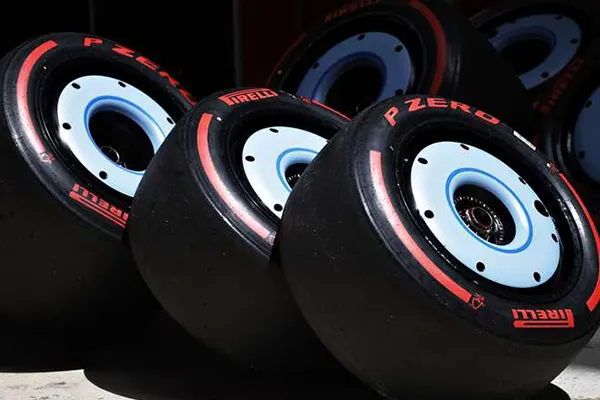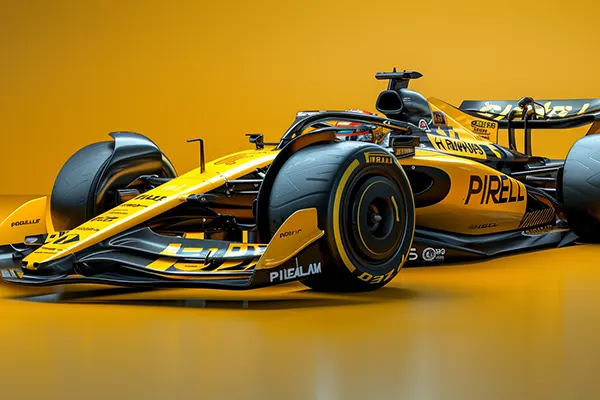Pirelli faces challenges in developing 2026 tyres, using a mix of virtual and physical models due to a lack of representative test mules.
In 2026, the regulatory revolution (new power unit, new chassis) will also trigger a tyre revolution. These will still be 18-inch tyres, but slightly narrower. Nevertheless, the specifications will need revising given the total aerodynamic support upheaval.
Pirelli is thus currently developing its 2026 tyres. To this end, several teams are engaged, including Aston Martin F1, starting this coming September.
However, there is a snag: the F1 cars being used are not optimal, as they are modified 2022 or 2023 vehicles. They do not fully replicate the aerodynamic conditions and loads of the 2026 F1 cars.
Why not attempt to build bespoke mules, specifically adapted in terms of car and tyre size and weight? Mules that also have active aerodynamics, since in 2026, drivers will be able to switch from a mode with little aerodynamic support (on straight lines) to a mode with a lot of aerodynamic support (in curves).
“It’s impossible to create a mule car with similar characteristics,” retorted Mario Isola, head of Pirelli.
“We will not have smaller cars. We can reduce weight—instead of doing long stints, you can lower the fuel level just to simulate the weight. But for the rest, it’s impossible because there is no active aerodynamics.”
Mario Isola then reassured: for 2017, the situation was the same and the virtual can also take over from the real.
“It’s a similar situation to what we encountered with the mule cars when we were developing the 18-inch tyre, for example, or in 2016 when we were developing the wider tyre for 2017. We did it with mules that were not fully representative.”
“It is therefore important for us to work concurrently with the virtual model and the physical model. We are trying to understand what the correlation between the two is so that we can have track tests that are as representative as possible for 2026, knowing that they will never be 100% representative.”
“For now, we have simulations from the FIA, not yet from the teams. But in the usual development process, we will also receive simulations from the 10 teams, and we will be able to understand what the general idea of the estimated performance for 2026 is.”
Pirelli is still awaiting crucial data from the FIA, specifically concerning the total increase in V6 power, which is expected to rise from 1000 to approximately 1110 horsepower, largely due to enhanced electric power. More electric energy means the rear axle will need to handle significant engine torque.
“We need these figures to characterise the stress exerted on the tyres and then design the tyre,” confirms Isola.
What is certain is that the option of 16-inch tyres was discarded in favour of slightly narrower 18-inch tyres. But why exactly, according to Isola?
“The 16-inch tyre that was initially considered at the start of the process was not the right size, in our view, if we want the car’s performance to remain similar to what we have today.”
“If you want to slow down the cars, reduce downforce, decrease speed, you can reduce the size. But if we want to maintain a similar level of performance, we cannot go in that direction; it’s too much. Smaller tyres like these do not have the load capacity required for these fast cars and the heavy vertical load imposed on tyres at high speeds.”
“We also have active aerodynamics changing the configuration. Thus, in curves, we have high aerodynamic support pushing the tyres heavily onto the ground. In straight lines, the aerodynamic support is lower, but the speed is much higher. This impacts the tyre’s integrity differently.”
“Taking all these factors into account, we proposed to the FIA a slightly smaller 18-inch tyre, but whose characteristics, we believe, guarantee performance that meets expectations.”
More downforce than expected in 2026?
Mario Isola finally sheds some light on the future downforce load of these F1 2026 cars: ultimately, the loss may not be as significant as initially anticipated!
“In the meantime, when we discussed it, the estimate also changed. Thus, from an initial estimate where the loss of aerodynamic support was quite significant, we have received simulations where the aerodynamic support loss is not so significant.”
“So, this is another element that we took into account, and we decided to follow this proposal, knowing that the final goal is to have lighter cars to save weight. We thus want to contribute to the building, but not with a tyre that would not be able to handle the level of stress expected for 2026.”
The initial tests for the 2026 tyres will take place next September, with Aston Martin F1 having been chosen for the occasion.

- You may also like>F1 Debates Engine Noise for 2026 with a 2030 Vision
- Following us on>Facebook and>Twitter
Pirelli’s 2026 Tyre Dilemma: No Suitable Test Mules Pirelli’s 2026 Tyre Dilemma: No Suitable Test Mules
